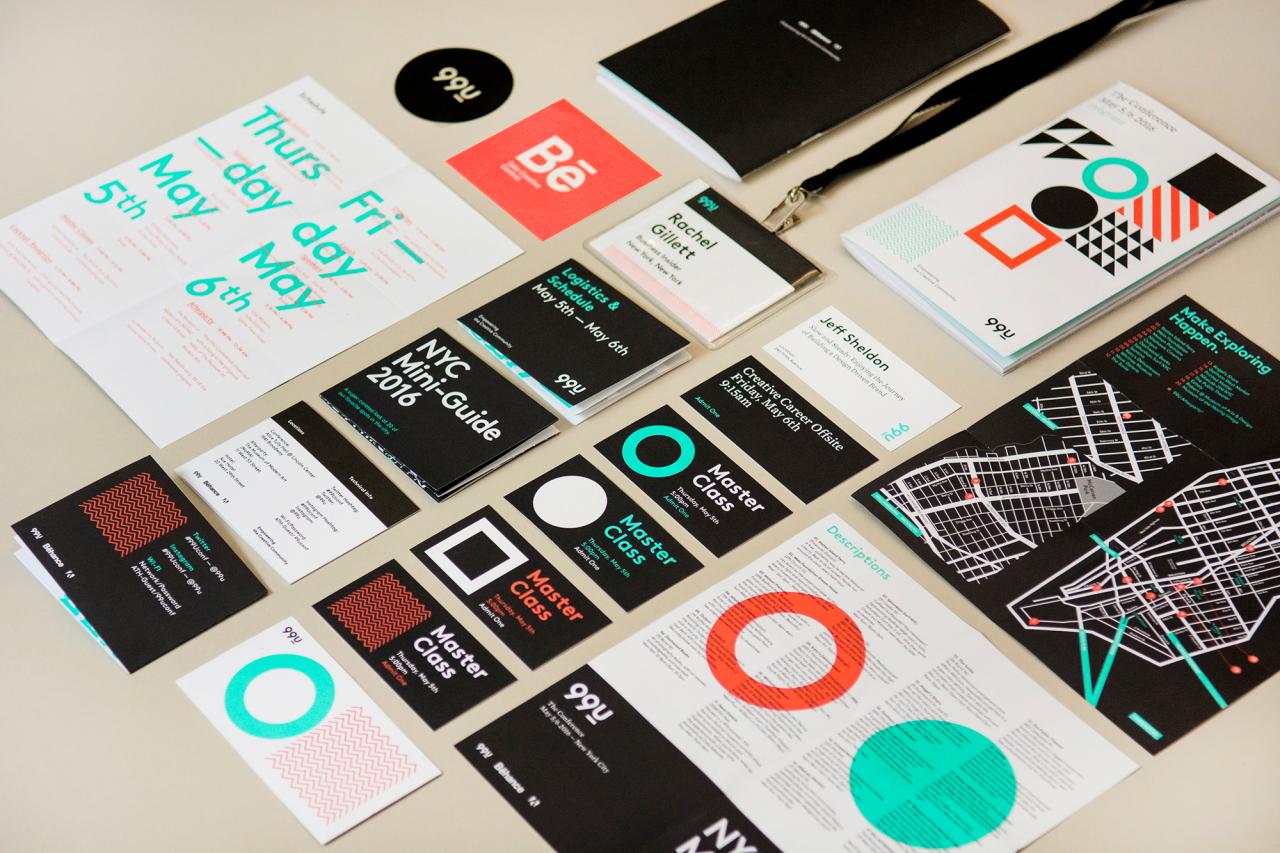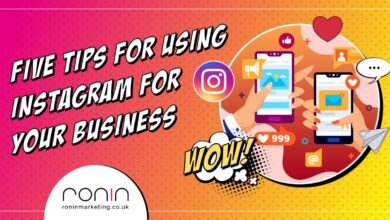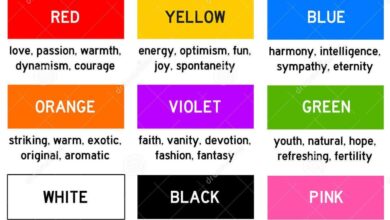
Branding Design Why Your Business Needs a Brand
Branding design why your business needs a brand – Branding design: why your business needs a brand – it’s more than just a logo. It’s the heart and soul of your company, the voice that speaks to your customers, and the promise you make to them. A strong brand isn’t just about looking good; it’s about building trust, loyalty, and ultimately, a thriving business. This post will explore the essential elements of effective branding and why investing in it is crucial for long-term success.
From crafting a compelling brand identity to understanding your target audience and implementing a consistent brand voice across all platforms, we’ll cover everything you need to know to build a brand that resonates. We’ll delve into the psychology of color, the power of typography, and the importance of maintaining consistency across all your marketing materials. Get ready to discover how a well-defined brand can transform your business and propel you towards growth.
Defining Brand Identity and its Importance
Your brand identity is more than just a logo; it’s the complete essence of your business, the personality you project to the world. It’s the sum of all the experiences a customer has with your company, from the first glance at your website to the final interaction with your customer service team. A strong brand identity is crucial for building trust, loyalty, and ultimately, success.A well-defined brand identity provides a clear and consistent message, guiding all aspects of your business and ensuring a cohesive customer experience.
This consistency is vital for building recognition and establishing a memorable presence in a competitive market. Without a strong brand identity, your business risks being lost in the noise, failing to connect with its target audience and ultimately hindering its growth potential.
Core Components of a Strong Brand Identity
A strong brand identity rests on several key pillars. These components work together to create a holistic and impactful brand experience. A lack in any one area can weaken the overall effectiveness. These core elements are essential for creating a recognizable and memorable brand.
- Brand Name and Messaging: This includes your company name, tagline, and the overall narrative you communicate to your audience. It should be memorable, relevant, and clearly articulate your value proposition.
- Visual Identity: This encompasses your logo, color palette, typography, and imagery. Consistency in these visual elements across all platforms is crucial for brand recognition.
- Brand Voice and Tone: This refers to the personality and style of your communication. Is your brand playful and informal, or professional and sophisticated? Consistency in tone across all platforms is vital for maintaining brand integrity.
- Brand Values: These are the core principles that guide your business decisions and shape your interactions with customers. Clearly defined values build trust and authenticity.
- Brand Personality: This is the human-like characteristics you ascribe to your brand. Is it friendly, innovative, reliable, or luxurious? A well-defined personality makes your brand relatable and memorable.
Impact of Consistent Brand Identity on Customer Perception
A consistent brand identity significantly impacts how customers perceive your business. When all aspects of your brand—from your logo to your customer service—align seamlessly, customers develop a clear and positive understanding of who you are and what you represent. This consistency builds trust and fosters loyalty, leading to increased customer retention and advocacy. Inconsistent branding, on the other hand, can confuse customers, damage your credibility, and ultimately hurt your bottom line.
Customers are more likely to remember and trust brands that consistently deliver on their promises, both visually and experientially.
Examples of Businesses with Exceptional Brand Identities
Many businesses excel at creating and maintaining strong brand identities. Apple, for example, is renowned for its minimalist aesthetic, intuitive design, and focus on user experience. Their consistent brand messaging and visual identity have cultivated a fiercely loyal customer base. Similarly, Nike’s iconic swoosh logo and powerful “Just Do It” tagline have become synonymous with athletic achievement and inspiration.
These brands understand the power of a consistent and well-defined identity to create lasting impact. Their success is a testament to the importance of investing in a strong brand.
Hypothetical Brand Identity for a Fictional Startup
Let’s imagine a fictional startup called “BloomTech,” a company specializing in sustainable and ethically sourced tech accessories.BloomTech’s brand identity would center around natural imagery and earthy tones. The logo would feature a stylized leaf incorporating technological elements, perhaps circuit lines subtly woven into the leaf’s design. The color palette would consist of muted greens, browns, and creams, reflecting the natural and sustainable aspects of the brand.
The brand voice would be warm, friendly, and informative, emphasizing the ethical and environmental benefits of their products. Their tagline could be “Tech that blooms,” highlighting both the technological aspect and the sustainable focus. The overall brand personality would be approachable, trustworthy, and environmentally conscious. This cohesive identity would communicate BloomTech’s values and resonate with environmentally aware consumers.
Branding Design Elements

Source: cloudfront.net
Crafting a strong brand isn’t just about a catchy name; it’s about a meticulously planned visual and verbal identity that resonates with your target audience and effectively communicates your brand’s values and personality. This involves a careful consideration of several key design elements working in harmony. Let’s delve into the specifics.
Effective Logo Design Principles
A logo is the cornerstone of your visual identity. It’s the first thing people see, and it needs to be memorable, versatile, and representative of your brand. Effective logo design often incorporates principles like simplicity (easy to remember and reproduce), scalability (looks good at any size), timelessness (avoids trends that quickly fade), and originality (stands out from the competition).
Think of the Nike swoosh – simple, instantly recognizable, and adaptable across various mediums. Another example is the Apple logo – minimalist, clean, and universally understood. These logos succeed because they are both memorable and easily reproducible, even in small sizes.
Typography’s Role in Brand Communication
Typography goes beyond just choosing a font; it’s about selecting typefaces that reflect your brand’s personality and enhance readability. Serif fonts (like Times New Roman) often convey a sense of tradition and sophistication, while sans-serif fonts (like Arial) tend to feel modern and clean. The choice of font weight, size, and spacing also contributes significantly to the overall message.
For instance, a bold, large font might suggest power and confidence, while a delicate, smaller font could convey elegance and subtlety. Inconsistency in typography can undermine a brand’s credibility; maintaining a consistent typographic style across all platforms is crucial.
Color Psychology in Branding
Color psychology plays a powerful, often subconscious role in influencing consumer perception. Different colors evoke different emotions and associations. Blue often represents trust and stability, green suggests nature and growth, red signifies energy and excitement, while yellow conveys optimism and happiness. Choosing the right color palette is crucial for aligning your brand’s visual identity with its desired message.
For example, a financial institution might opt for blue to convey trustworthiness, while a children’s toy company might use bright, playful colors like yellow and orange. Understanding the psychological impact of color choices is paramount for effective branding.
Mood Board: A Minimalist Coffee Shop Brand
This mood board illustrates the visual identity of a minimalist coffee shop called “The Daily Grind.”* Logo: A simple, sans-serif typeface spelling “The Daily Grind” in a muted grey, with a small, stylized coffee bean icon subtly incorporated.
Color Palette
Neutral tones of off-white, light grey, and a deep charcoal grey, accented with a warm, earthy brown for the coffee.
Typography
Clean, modern sans-serif fonts are used throughout, maintaining a consistent, minimalist aesthetic. A slightly bolder font is used for headings and menus.
Imagery
High-quality photographs of steaming coffee cups, minimalist coffee shop interiors with natural light, and close-ups of coffee beans. The overall feel is clean, calming, and sophisticated.
Texture
Subtle textures are used, such as a slightly textured background for the menu or a linen-like texture for the website.
Comparison of Branding Styles
| Branding Style | Visual Characteristics | Target Audience | Examples |
|---|---|---|---|
| Minimalist | Simple, clean lines, limited color palette, uncluttered design | Sophisticated, discerning consumers | Apple, Muji |
| Modern | Geometric shapes, bold colors, clean typography, innovative design | Trendy, forward-thinking consumers | Tesla, Airbnb |
| Vintage | Retro fonts, muted colors, distressed textures, nostalgic imagery | Consumers who appreciate classic style and craftsmanship | Coca-Cola (classic logo), Levi’s |
| Rustic | Natural materials, earthy tones, handcrafted elements, imperfect aesthetics | Consumers who value authenticity and natural beauty | Many craft breweries, coffee shops with a focus on local sourcing |
The Role of Branding in Business Growth
A strong brand isn’t just a logo; it’s the bedrock of a successful business. It’s the emotional connection you forge with your customers, the promise you make, and the experience you deliver. Investing in professional branding design is an investment in your future growth, attracting customers, fostering loyalty, and ultimately driving profitability.A well-defined brand acts as a powerful magnet, attracting customers who resonate with your values and offerings.
It simplifies the decision-making process for potential buyers, cutting through the noise of the marketplace and establishing a clear identity that sets you apart from competitors. This isn’t just about aesthetics; it’s about building trust and credibility, fostering a sense of community, and creating a lasting impression.
Attracting and Retaining Customers Through Strong Branding
A strong brand simplifies the customer journey. Imagine two coffee shops: one with a generic name and logo, and another with a carefully crafted brand identity that evokes feelings of warmth, comfort, and artisanal quality. Which shop is more likely to attract customers seeking a specific experience? The latter, undoubtedly. A strong brand resonates with a target audience, attracting customers who value what the brand represents and are willing to pay a premium for it.
This brand loyalty translates into repeat business and positive word-of-mouth marketing, further strengthening the brand’s position in the market. This is further amplified by consistent messaging across all platforms – from website to social media to in-store experience. Customers feel understood and valued, fostering long-term relationships.
Key Benefits of Investing in Professional Branding Design
Investing in professional branding design yields several tangible benefits. Firstly, it provides a cohesive and consistent brand image across all platforms, enhancing recognition and recall. Secondly, it elevates your business’s perceived value, allowing you to command premium pricing. Thirdly, it simplifies marketing efforts by providing a clear framework for messaging and design. A professional designer can create a brand identity that is both aesthetically pleasing and strategically effective, aligning perfectly with your business goals.
This reduces wasted marketing spend and maximizes return on investment. Finally, a strong brand makes your business more resilient to market fluctuations. Customers are more likely to stick with a brand they trust, even when faced with competitive pressures.
A strong brand is crucial for any business; it’s your visual identity, the first impression you make. To really connect with your audience, you need to be where they are, and that often means video. Check out this great guide on getting it on with YouTube to learn how to leverage the platform’s power. Ultimately, a well-defined brand, consistently presented across all platforms like YouTube, builds trust and loyalty, leading to lasting success.
Marketing Effectiveness: Strong vs. Weak Branding
The difference in marketing effectiveness between businesses with strong and weak branding is stark. Businesses with strong brands enjoy higher customer engagement, increased brand awareness, and improved conversion rates. Their marketing campaigns resonate more deeply with their target audience, resulting in higher ROI. In contrast, businesses with weak brands struggle to cut through the market noise. Their marketing efforts often lack focus and consistency, leading to wasted resources and minimal impact.
Consider a comparison between two competing clothing brands: one with a well-established brand identity and the other lacking a clear image. The former can leverage its brand recognition to launch successful marketing campaigns with minimal advertising spend, while the latter needs to invest heavily to gain traction, with uncertain results.
Long-Term Value of a Well-Defined Brand
A well-defined brand is a long-term asset that continues to appreciate in value over time. It builds equity, creating a valuable intangible asset that can be leveraged for future growth and expansion. A strong brand acts as a protective shield against competition, making it more difficult for new entrants to gain market share. It also simplifies expansion into new markets and product lines, as the brand’s established reputation provides a solid foundation for growth.
For example, a well-known and trusted brand can launch a new product with significantly less marketing effort than a new, unknown brand, because customers are already predisposed to trust the established brand. This long-term value is often underestimated but is crucial for sustainable business success.
Branding and Target Audience
Understanding your target audience is the cornerstone of successful branding. Without a clear picture of who you’re trying to reach, your marketing efforts will be scattered and ineffective, like throwing darts in the dark. Effective branding requires a deep dive into the demographics, psychographics, and behaviors of your ideal customer. This allows for the creation of resonant messaging and visual identities that truly connect.Identifying and understanding your target audience involves a multi-faceted approach.
It’s not just about age and location; it’s about understanding their needs, aspirations, pain points, and how they consume information. This requires a blend of quantitative and qualitative research methods, allowing for a nuanced understanding beyond simple demographics.
Target Audience Identification Methods
Market research is crucial for pinpointing your target audience. This can involve surveys, focus groups, competitor analysis, and analyzing existing customer data. For example, a new coffee shop might survey local residents about their coffee preferences, frequency of visits to cafes, and preferred atmosphere (quiet study space versus lively social hub). Analyzing existing customer data, if available, can reveal valuable insights into purchasing habits and preferences.
Competitor analysis helps identify gaps in the market and understand how competitors are targeting their audiences.
Designing Marketing Materials for Specific Demographics
Once you’ve defined your target audience, you can tailor your marketing materials accordingly. For instance, a brochure targeting young adults (18-25) might feature vibrant colors, bold graphics, and concise, informal language, emphasizing convenience and social aspects. In contrast, a brochure for a more mature audience (45-65) might use a more sophisticated design, muted colors, and emphasize quality, reliability, and value.
Social media posts should similarly reflect the platform’s user base and the target audience’s preferred communication style. A TikTok campaign would utilize short, engaging video content, while a LinkedIn campaign would focus on professional networking and industry-specific information.
Examples of Successful Targeting
Nike successfully targets a broad audience but tailors its messaging to specific demographics. Its campaigns featuring elite athletes resonate with performance-minded individuals, while its collaborations with fashion designers appeal to a style-conscious crowd. Similarly, Dove’s “Real Beauty” campaign successfully targeted a diverse audience by showcasing women of different ages, body types, and ethnicities, challenging traditional beauty standards. These examples highlight the power of understanding and catering to diverse needs and preferences.
Market Research Techniques for Branding Decisions
Several methods can be used to conduct effective market research. Surveys can gather quantitative data on preferences and demographics. Focus groups provide qualitative insights into customer attitudes and opinions. Social media listening tools can monitor brand mentions and customer sentiment. Analyzing website analytics can reveal user behavior and preferences.
By combining these approaches, brands can gain a comprehensive understanding of their target audience and use this knowledge to inform branding decisions, ensuring their message resonates with the intended recipients.
Branding Across Different Platforms
Maintaining a consistent brand image across all platforms is crucial for building a strong and recognizable identity. Inconsistency can confuse your audience and dilute your brand message, hindering your ability to connect with potential customers and build loyalty. A unified brand experience, however, fosters trust and reinforces your brand’s values wherever your audience encounters it.Your brand needs to speak with one voice, whether it’s on your website, social media channels, or in print materials.
Imagine a company with a playful, vibrant logo on its website, but using a formal and austere tone in its email marketing – this dissonance can create a fractured perception of the brand. Consistency ensures a seamless and positive brand experience for your customers, strengthening their connection with your business.
Creating a Brand Style Guide
A brand style guide serves as the central repository for all your brand’s visual and verbal guidelines. It’s a living document that ensures everyone involved in representing your brand—from marketing teams to freelance designers—is on the same page. A well-structured style guide helps maintain consistency and prevents brand dilution across different platforms and projects. The process involves defining your brand’s personality, visual elements, and voice, then documenting these elements in a clear and accessible format.
This might include examples, templates, and specific instructions.
Sample Brand Style Guide for “CoffeeCloud,” a fictional coffee shop, Branding design why your business needs a brand
This fictional brand, CoffeeCloud, aims for a friendly, approachable, and slightly quirky feel, targeting young professionals and students.
Logo Usage: The CoffeeCloud logo (a stylized cloud with a coffee bean at its center) should always maintain its original proportions and color scheme. Never distort or alter the logo in any way. Minimum clear space around the logo should be equal to half the logo’s height. Acceptable logo variations include a black and white version for print materials where color might be cost-prohibitive.
Color Palette: The primary colors are a warm, inviting #F2A972 (light orange) and a calming, earthy #5A3D2C (dark brown). Accent colors include #E0E0E0 (light gray) for backgrounds and #FFFFFF (white) for text on primary color backgrounds. These colors should be used consistently across all platforms to maintain a cohesive brand image. Avoid using other colors unless specifically approved.
Typography: The primary font is Playfair Display for headings, providing an elegant yet approachable feel. For body text, use Open Sans, a clean and legible sans-serif font that ensures readability across various platforms. Use consistent font sizes and weights as specified in the font hierarchy provided in the appendix (a hypothetical appendix with detailed font usage specifications would be included here).
Adapting Brand Messaging for Different Platforms
While maintaining brand consistency is paramount, it’s also essential to tailor your messaging to suit the specific characteristics of each platform. For example, your website copy might be more detailed and informative, while your social media posts need to be concise and engaging. However, the core brand values and personality should remain consistent.Consider CoffeeCloud’s social media: On Instagram, they might share visually appealing photos of their coffee and pastries, using short, catchy captions.
On Twitter, they could engage in conversations with customers, responding to queries and sharing quick updates. On their website, they would provide detailed information about their menu, location, and story. Although the format and tone vary, the friendly and approachable brand personality remains consistent across all platforms. The visual elements, such as the logo and color palette, remain consistent as well, creating a unified brand experience.
Measuring Branding Effectiveness: Branding Design Why Your Business Needs A Brand

Source: mindstorm.in
So, you’ve poured your heart and soul (and budget!) into a killer branding campaign. But how do you know if it’s actually working? Measuring the effectiveness of your branding efforts isn’t just about vanity metrics; it’s about understanding your return on investment and refining your strategy for future success. This involves a multifaceted approach, looking beyond simple likes and follows to truly gauge the impact on your bottom line and brand perception.Effective brand measurement requires a strategic approach combining quantitative and qualitative data.
We need to understand not just
- how many* people are seeing your brand, but also
- how* they perceive it and whether that perception translates into desired actions. This involves setting clear, measurable goals at the outset of your campaign, then tracking progress against those goals using a variety of methods.
Key Metrics for Assessing Branding Campaign Success
To effectively measure your branding campaign, you need to focus on key performance indicators (KPIs) that directly reflect your objectives. These metrics provide a quantifiable assessment of your progress and help identify areas for improvement. For example, if your goal is to increase brand awareness, you might track metrics like website traffic, social media engagement, and brand mentions.
If your goal is to drive sales, you’ll focus on metrics like conversion rates and revenue generated. A balanced approach that includes both awareness and action-oriented metrics is essential.
Methods for Tracking Brand Awareness and Customer Engagement
Tracking brand awareness and customer engagement requires a blend of tools and techniques. Brand awareness can be measured through surveys, social listening tools that monitor brand mentions across various platforms, and website analytics which reveal traffic sources and user behavior. Customer engagement can be assessed by monitoring social media interactions (likes, comments, shares), email open and click-through rates, and customer feedback gathered through surveys or reviews.
For example, a significant increase in social media mentions alongside a rise in website traffic strongly suggests a successful awareness campaign. Conversely, low engagement despite high reach indicates a potential disconnect between your messaging and your target audience.
Analyzing Customer Feedback to Improve Branding Efforts
Customer feedback is invaluable for refining your branding strategy. Analyzing this feedback allows you to identify areas where your brand messaging resonates and where it falls short. This can be achieved through various methods, including online surveys, focus groups, social media monitoring, and customer service interactions. For example, negative reviews highlighting a lack of clarity in your brand messaging might indicate a need to simplify your communication.
Conversely, positive feedback focusing on a specific brand attribute (e.g., excellent customer service) can inform future marketing efforts. Remember, consistently soliciting and acting on feedback demonstrates a commitment to customer satisfaction and strengthens brand loyalty.
Hypothetical Six-Month Branding Campaign Evaluation Plan
Let’s imagine a six-month branding campaign for a new line of organic coffee. Our primary goals are to increase brand awareness by 30% and drive a 20% increase in online sales.
| Month | Metrics | Activities | Analysis |
|---|---|---|---|
| 1-2 | Website traffic, social media engagement, brand mentions | Launch social media campaign, influencer marketing, content marketing | Assess initial reach and engagement, identify top-performing content |
| 3-4 | Website conversion rate, email open/click-through rates, customer surveys | Targeted email campaigns, website optimization, online advertising | Measure conversion rates, identify areas for website improvement, analyze customer feedback |
| 5-6 | Sales figures, customer satisfaction scores (CSAT), Net Promoter Score (NPS) | Sales promotions, customer loyalty programs, repeat customer analysis | Assess overall campaign success, identify areas for improvement, plan for future campaigns |
This plan Artikels key metrics, activities, and analysis methods for each stage of the campaign. Regular monitoring and analysis will enable adjustments to the strategy based on performance, ensuring optimal results. The data gathered will provide a clear picture of the campaign’s effectiveness and inform future branding initiatives.
Last Recap
Ultimately, branding is an investment in your future. It’s about building something meaningful and lasting that connects with your customers on a deeper level. By understanding the core principles of branding design and implementing a consistent strategy, you’ll not only attract new customers but also cultivate long-term loyalty and build a brand that stands the test of time. So, take the time to define your brand identity, invest in professional design, and watch your business flourish.
Essential Questionnaire
What’s the difference between branding and marketing?
Branding is about building a perception and identity for your business, while marketing is about promoting your products or services to customers. Branding informs marketing; a strong brand makes marketing more effective.
How much should I budget for branding design?
It depends on your needs and the scope of the project. Consider consulting with designers to get accurate quotes, but remember that investing in professional branding is an investment in your long-term success.
How long does it take to develop a brand?
The timeline varies depending on the complexity of the project. It can range from a few weeks to several months, involving research, design, and refinement.
Can I do my own branding?
While you can certainly work on aspects yourself, professional designers bring expertise and experience that can significantly enhance the impact and effectiveness of your brand.





